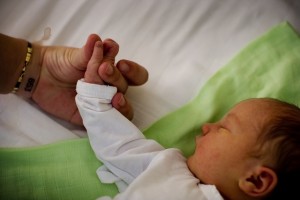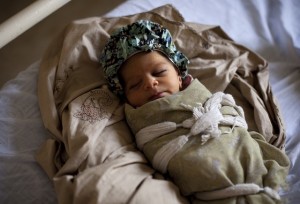每年近300万名新生儿可望获救
2014-05-20
美国纽约/香港,2014年5月20日——今天,医学杂志《刺针(The Lancet)》在联合国儿童基金会(UNICEF)总部发佈一系列具开创性的论文,指出近300万名出生1个月内夭折的婴儿,特別是最脆弱及难以取得服务的儿童,若在出生时得到优质的护理,大多数都能倖存。


|
新生儿夭折高佔5岁以下儿童死亡人数的44%,比1990年的比例还要高。这些夭折的儿童往往是最贫困、最弱势的一群。
UNICEF全球衞生项目负责人米奇.乔普拉博士( Dr Mickey Chopra )说:「我们看到在拯救5岁以下儿童生命所取得的显着进展,但最幼小、最脆弱的儿童仍面对重大困难,他们需要关注和资源。把焦点放在刚分娩至 出生1小时这个关键时段,可增加母婴存活的机会。」 根据UNICEF的报告,每年有290万名婴儿在出生后28天内夭折。另有260万名婴儿胎死腹中,其中120万名是在母亲分娩过程中,心跳停止而死亡。分娩后首24小时对产妇和婴儿来说,都是最危险的时期,近半数母婴死亡都在期间发生。
《刺针》杂志「每个新生儿」系列论文提出了最有效拯救新生儿生命的方法,包括母乳餵哺、新生儿復甦法、针对早产儿的「袋鼠护理法」(母婴皮肤持续接触),並可有效预防及治疗感染。更多资金投入、充足设备对拯救新生儿生命都十分重要。
在拯救新生儿生命工作上取得最大进展的国家,都分別特別关注母亲与5岁以下儿童的全面保健计划。例如卢旺达,在撒哈拉以南非洲地区中取得显着进 展,该国自2000年以来,新生儿死亡人数已减少了一半。此外,一些低、中收入国家也透过培训助产士和护士,为最贫困的家庭提供优质的分娩护理,取得了显着成效。
|
|
一项在51个新生儿夭折率最高的国家进行的调查发现,如果所有人都能获得该国最富裕一群所接受到的优质护理,每年将可避免60万人死亡,相当于减少近20%死亡人数。 |
每年新生儿夭折人数最多的国家集中在南亚和撒哈拉以南的非洲地区,其中印度(779,000)、尼日利亚(267,000)和巴基斯坦(202,400)位居前列。在情况最险峻的国家,为母婴健康每投放港币7.8元(1美元),就可产生达9倍的社会和经济效益。

|

|
UNICEF和世界衞生组织将在下月推出「每个新生儿行动计划」,以在2035年前消除可预防的产妇和儿童死亡。
《刺针》的「每个新生儿」系列论文由UNICEF、伦敦衞生与热带医学院和巴基斯坦阿迦汗大学的专家等共同撰写。
「每个新生儿行动计划」将于UNICEF就联合国《儿童权利公约》25周年倒数6个月时展开,以强调儿童工作上取得重大进展之余,最弱势儿童仍要面对的挑战。









